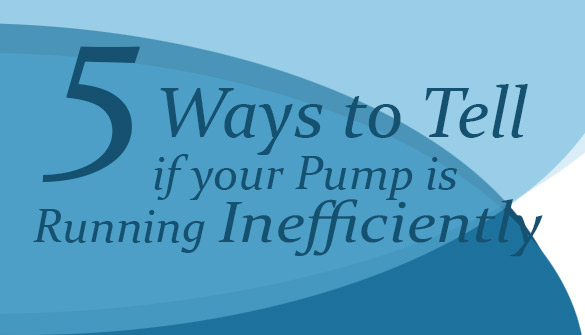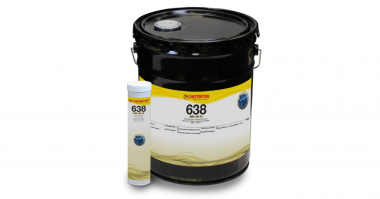Authors: Ralph Merullo, Manager of Application Engineering for Rotating and Stationary Equipment Sealing, and Jim Cairns, Global PLM Rotary Equipment, A. W. Chesterton Company®
How can I tell if my centrifugal pump is running inefficiently?
Centrifugal pumps include pump performance curves as part of the documentation provided by the pump manufacturer. These performance curves define the pumps performance; including how much energy will be required from the motor. Performance curves are based on actual tests conducted by pump manufacturers which define how the pump will perform under a specific set of circumstances. The curve shows how the pump should perform and serves as a valuable reference tool over the life of the pump. So an important question to ask is: “Is the pump delivering the flow and pressure that the performance curve says it should? And if it is not, the question becomes why not?” A pump could be operating per the performance curve, but fluid may not get where it needs to go because of system issues including a closed suction or discharge valve, clogged piping, clogged strainer, vapor entrained in the fluid or other system issues. Assuming system issues have been eliminated as possible causes, we can then focus on the pump itself. If your pump is not doing what you expect, the pump performance curve is a good place to start.
Let’s create a scenario for the sake of discussion – our figurative pump performance curve says our pump is designed to lift 50 gallons per minute 100 feet to a tank. During operation, our pump lifts 20 gallons per minute 100 feet to the tank. So our actual pump performance deviates from our pump performance curve. So the question is why is that?
Well, centrifugal pump inefficiency can be caused by a few different things:
1. Has your motor been wired backwards? Pump shaft rotation is indicated on the bearing frame of the pump. The direction of shaft rotation should agree with the motors wiring. If the motor is improperly wired, then the motor can cause the pump shaft to rotate counter to the required direction. The pump will still pump fluid, but at a fraction of the flow and head indicated by the performance curve. Usually electricians will “bump the motor” which means provide energy for a split second to check the motor shaft rotation agrees with the rotation indicated on the pump bearing frame or in the manufacturer’s installation and operation manual. Many mechanical seal manufacturers design pumping rings to generate flow in either direction of shaft rotation, so the seal will operate, but the pump will not perform as designed. So if your pump is not generating the correct rate of flow, check that the shaft is rotating in the correct direction.
2. Have the bearings degraded or has the bearing lubricant become contaminated? Generally motors used on centrifugal process pumps synchronize with the frequency of electric current provided. Typically 60 cycles in North America, and 50 cycles in the EU. However the frequency can be controlled by a variable frequency drive (VFD) which then controls the rotating speed of the motor. A synchronous motor also known as an alternating current motor will seek as much current as it needs to maintain its speed. However, if a shaft thrust or radial bearing is failing, it exerts a drag on the motor; asking that motor to pull more current so it can rotate at that design speed. If a bearing is failing, it costs more energy to get the correct amount of flow. The important concept here is that while your pump may generate the specified flow and head (pressure), more energy will be required to rotate the shaft at the design speed. Industrial process pumps are often washed down; causing bearing lubricant to become contaminated eventually damaging the bearing. Once water gets into the bearing lubricant, bearings can degrade very quickly. Bearing protection technologies are available to protect bearing lubricants from contamination. Non-contacting labyrinth seals are devices used to seal bearing housings to prevent this problem. Protecting bearings and monitoring moisture in the lubricant is critical to maintaining the reliability and the efficiency of the pump.
3. Are the impeller(s) and casing in adequate condition? It’s important to consider what is happening inside the pump. Pump designers are very specific about the shape of the impeller and the casing, as these geometries play a vital role in the efficiency of the pump, affecting its ability to impart energy to the fluid. Erosion and corrosion can significantly change the shape of the impeller and/or the pump casing. Though pumps are designed with a corrosion allowance, damage beyond these limits can affect the hydraulic efficiency of the equipment. Some pumps are designed with enclosed impellers and wear rings. Wear rings are designed as a sacrificial component to inhibit recirculation from the high pressure area of the impeller to the low pressure pump suction. Solids in the fluid flowing at high speed may change the shape of the casing and/or the impeller, therefore affecting the efficiency of the pump over time. Pump manufacturers can mitigate these issues by using materials which are corrosion and erosion resistant. Slurry pump manufacturers offer very hard casing and impeller material or rubber linings to prevent erosion.
4. Have you selected the right pump for your specific application? Oversizing pumps is common. Specifying engineers choose pumps that generate more flow and head than the application requires. They know over time the pumped fluid will wear the casing and the impeller. The worn pump will eventually operate within an acceptable performance range. The pump discharge will be throttled until the wear occurs, wasting valuable energy. If the pump casing and impeller were protected from corrosion and erosion, a smaller pump could be used and operate efficiently. Some specifying engineers select pumps with protective coatings to minimize the effects of corrosion and erosion. They are buying the pump they need to save energy.
5. Would a Variable Frequency Drive (VFD) help your pump operate more efficiently? Many pump owner / operators are retrofitting their motors with Variable Frequency Drives (VFD) to use only the energy needed to get the flow they need when they need it. So if lower flow is needed by the process, instead of throttling the discharge valve, the operator can change the motor speed by changing the current frequency, thereby using less energy. We recommend identifying pumps in your operation which operate with partially closed discharge valves. These may be candidates for VFDs, which would enable you to save energy.
If my pump is running, why should I care if it is operating efficiently?
Pump owners actually spend a lot more money over time on electricity costs than the initial capital cost of a pump. Energy tends to be an invisible cost, so improving the efficiency of a pump can have a big impact on increasing return on investment (ROI). If a pump owner measures the efficiency of their pump, and they find that pump is running far from its best efficiency point, then the cost of operating that pump inefficiently can be much higher than the initial cost of the pump (depending on the type of pump and how often it is running).
To check if your pump is operating efficiently, measure the power consumed by the pump and check it against the pumps performance curve. The pump curve will specify how much power you should be using at the flow and pressure your pump is generating. This helps you to identify which pumps are not operating efficiently. You can then calculate the energy cost that can be saved by addressing the inefficient pumps issues.
Identifying inefficient pumps as part of an energy audit can be a great first step in reducing energy consumption and the cost of electricity. The key here is that you have to be PROACTIVE. Power companies may be willing to provide energy audits as a means to save energy and lower peak loads. The bottom line is that checking your pump’s efficiency can save energy and reduce costs.





Thank you for informing me that the bearing and lubricant can get damaged by water and can cause degradation. The problem I am having is that the pump randomly shuts off when I need it the most! I do not know if it is getting clogged with debris or what. I will have to look into professional services that can help me repair the pump and its parts.